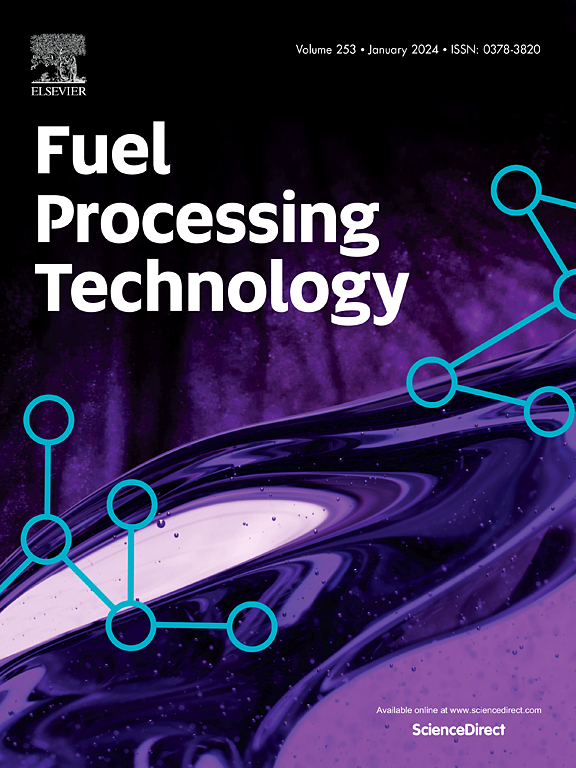Study of the mechanism of high-efficient in-situ SO2 fixation during oxidative roasting of high‑sulfur iron ores and DFT calculation
IF 7.2
2区 工程技术
Q1 CHEMISTRY, APPLIED
引用次数: 0
Abstract
The development and utilization of high‑sulfur iron ore in China has provided abundant raw materials for the iron and steel industry, but it has also created severe environmental challenges, particularly in controlling sulfur dioxide emissions. Although the current sulfur-fixation technology has made some progress, it still has limitations such as low efficiency and less stability. This study will in-depth explore the mechanism of in-situ sulfur fixation with the aim of solving aforementioned issues and realizing the transition from terminal desulphurization to process control. Firstly, the effects of oxidation roasting temperature, oxygen concentration, gas flow rate and sulfur-fixation agent concentration on the sulfur-fixation efficiency were investigated to determine the regulation mechanism of sulfur fixation technology. Moreover, the sulfur-fixation activities of CaO and MgO were also compared in depth by Density Functional Theory (DFT) calculation in terms of surface adsorption energy, transition state and partitioned density of states (PDOS). Finally, the sulfur-fixation mechanism was analyzed in depth by X-ray diffraction (XRD), X-ray photoelectron spectroscopy (XPS) and scanning electron microscopy (SEM) tests in terms of phase composition, crystal structure and surface morphology. Therefore, the work will present basic theory and systematic guidance for in-site sulfur-fixation of high‑sulfur iron ore under oxidation roasting process.

高硫铁矿石氧化焙烧过程中高效原位固SO2机理研究及DFT计算
中国高硫铁矿石的开发利用为钢铁工业提供了丰富的原料,但也带来了严峻的环境挑战,特别是在控制二氧化硫排放方面。目前的固硫技术虽然取得了一定的进展,但仍存在效率低、稳定性差等局限性。本研究将深入探讨原位固硫机理,以解决上述问题,实现从末端脱硫到过程控制的过渡。首先,研究了氧化焙烧温度、氧气浓度、气体流量和固硫剂浓度对固硫效率的影响,确定了固硫工艺的调节机理。此外,通过密度泛函理论(DFT)计算,从表面吸附能、过渡态和分配态密度(PDOS)等方面对CaO和MgO的固硫活性进行了深入比较。最后,通过x射线衍射(XRD)、x射线光电子能谱(XPS)和扫描电镜(SEM)测试,从相组成、晶体结构和表面形貌等方面深入分析了固硫机理。为高硫铁矿氧化焙烧现场固硫提供理论依据和系统指导。
本文章由计算机程序翻译,如有差异,请以英文原文为准。
求助全文
约1分钟内获得全文
求助全文
来源期刊

Fuel Processing Technology
工程技术-工程:化工
CiteScore
13.20
自引率
9.30%
发文量
398
审稿时长
26 days
期刊介绍:
Fuel Processing Technology (FPT) deals with the scientific and technological aspects of converting fossil and renewable resources to clean fuels, value-added chemicals, fuel-related advanced carbon materials and by-products. In addition to the traditional non-nuclear fossil fuels, biomass and wastes, papers on the integration of renewables such as solar and wind energy and energy storage into the fuel processing processes, as well as papers on the production and conversion of non-carbon-containing fuels such as hydrogen and ammonia, are also welcome. While chemical conversion is emphasized, papers on advanced physical conversion processes are also considered for publication in FPT. Papers on the fundamental aspects of fuel structure and properties will also be considered.
 求助内容:
求助内容: 应助结果提醒方式:
应助结果提醒方式:


